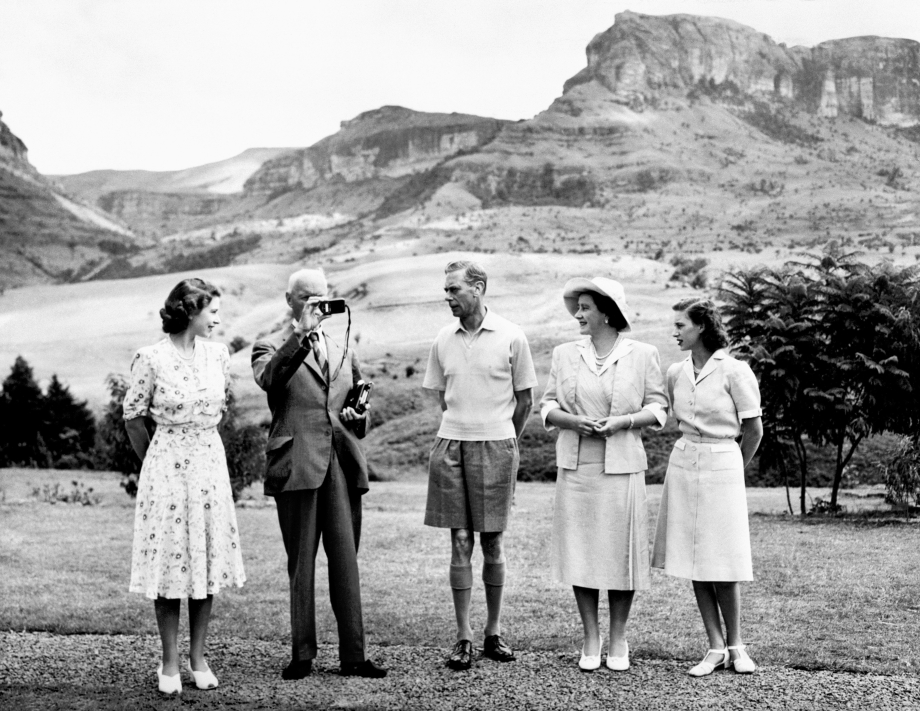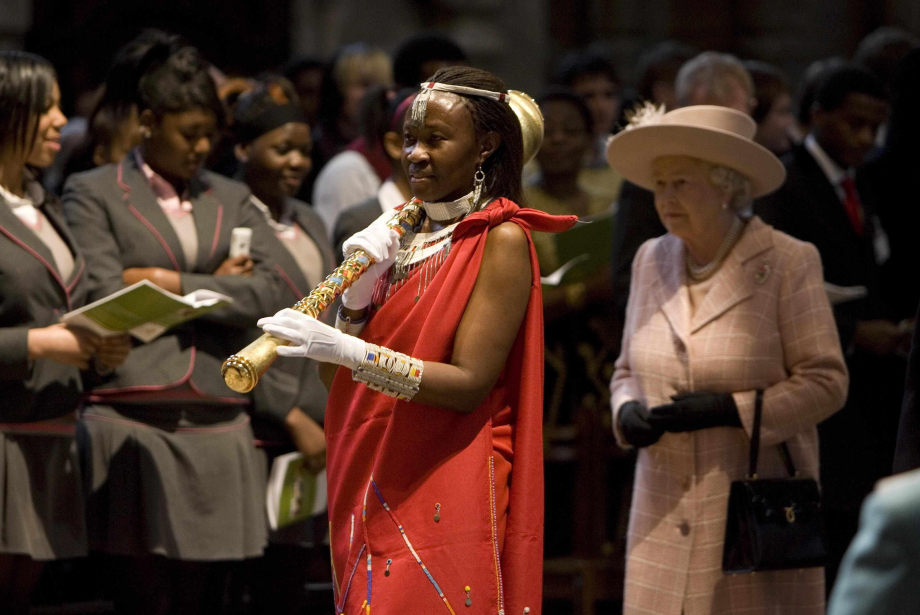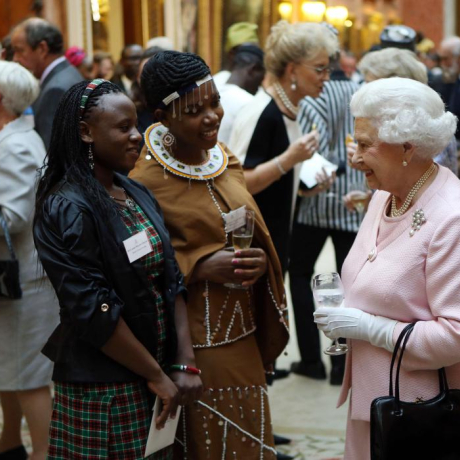The Commonwealth is an international organisation, spanning many geographical regions, religions and cultures. It exists to foster international co-operation and trade links between people all over the world. Over the course of Her Majesty’s reign, the Commonwealth grew from just seven nations to 56 members, representing more than 2.5 billion people, more than a third of the world's population.
Though the title of ‘Head of the Commonwealth ’ is not vested in the Crown, it was agreed amongst all Commonwealth countries during the Commonwealth Heads of Government Meeting 2018 in London, that The Prince of Wales - now The King - would succeed Her Majesty as Head of the Commonwealth upon his Accession.
The Queen’s Commonwealth visits
During her reign, The Queen undertook more than 200 visits to Commonwealth countries and visited almost every country of the Commonwealth, as well as making many return visits over the years.
One third of The Queen's total overseas visits were to Commonwealth countries.

The Queen’s first official overseas visit was in 1947 as Princess Elizabeth, when Her Majesty toured South Africa, Zimbabwe and Botswana with King George VI and Queen Elizabeth. The Queen celebrated her 21st birthday in South Africa, which was marked by a speech broadcast across the Commonwealth in which she spoke of her hopes for what the people of the Commonwealth could achieve as they rebuilt following the Second World War:
If we all go forward together with an unwavering faith, a high courage, and a quiet heart, we shall be able to make of this ancient commonwealth, which we all love so dearly, an even grander thing - more free, more prosperous, more happy and a more powerful influence for good in the world.
The Queen visited Canada no less than 12 times, opened the Sydney Opera House in 1973 and in 1953 met Queen Salote of Tonga - at the time the only other female Monarch in the Commonwealth. She attended 22 Commonwealth Heads of Government Meetings and seven Commonwealth Games during her reign.
The last Commonwealth country The Queen visited was Malta in 2015 for the Commonwealth Heads of Government Meeting. This was also Her Majesty’s final overseas visit.
The Duke of Edinburgh, The Prince of Wales and other members of the Royal Family supported The Queen in her role as Head of the Commonwealth, regularly visiting the Realms and independent Commonwealth countries, particularly during years marking significant Jubilees for Her Majesty.
The Commonwealth changed significantly during The Queen’s reign, with a number of realms becoming independent. Her Majesty and other members of the Royal Family often attended independence events marking the transition from realm to republic.
Keeping in contact
The Queen was in regular contact with the Commonwealth Secretary-General and the Secretariat (the Commonwealth's central organisation) in order to keep up-to-date with developments in Commonwealth countries, and with the organisation as a whole. Her Majesty also had regular meetings with Heads of Government from Commonwealth countries, and with High Commissioners based in London.
Governors General - The Queen’s representatives in the 14 Commonwealth realms outside the UK - were able to provide more country-specific updates, and Her Majesty was always aware of any major developments in each of her realms.
Commonwealth Day
Since 1977, Commonwealth Day has been celebrated throughout the Commonwealth on the second Monday in March. Almost every year of her reign, The Queen sent a special message to the people of the Commonwealth, as well as attending the Commonwealth Day celebrations in London, including a service at Westminster Abbey.

In her 2015 Commonwealth Day message, Her Majesty spoke of the strength which came from Commonwealth nations working together.
One simple lesson from history is that when people come together to talk, to exchange ideas and to develop common goals, wonderful things can happen.
She went on to reflect on the development of the Commonwealth as an organisation, and the importance of investing the time and energy to drive it forwards, ”Not only are there tremendous rewards for this cooperation, but through dialogue we protect ourselves against the dangers that can so easily arise from a failure to talk or to see the other person's point of view.
"Indeed, it seems to me that now, in the second decade of the twenty first century, what we share through being members of the Commonwealth is more important and worthy of protection than perhaps at any other time in the Commonwealth's existence. We are guardians of a precious flame, and it is our duty not only to keep it burning brightly but to keep it replenished for the decades ahead."
Commonwealth trusts and initiatives
A number of trusts and initiatives set up in Her Majesty’s name had a significant impact across the Commonwealth.
The Queen Elizabeth Diamond Jubilee Trust worked to combat avoidable causes of blindness, providing 26.6 million antibiotic eye treatments and 102,400 sight-saving operations to help eliminate trachoma in seven Commonwealth countries.
The Trust also launched The Queen’s Young Leaders programme which was initiated to recognise young people who were supporting their communities - both local and worldwide - through a series of extraordinary initiatives, from using technology to improve healthcare in remote areas of the Commonwealth to helping at-risk young people through arts programmes.
The Queen's Young Leaders received training, mentoring and networking opportunities to support their work.
The Queen's Commonwealth Canopy - launched in 2015 - created a network of forest conservation programmes across the Commonwealth. More than 45 countries committed to preserving and nurturing their forests through planting native trees and conserving indigenous vegetation, ensuring that huge areas of land will be preserved in their natural state for future generations. Her Majesty said of the initiative:
I have been especially touched by … The Queen’s Commonwealth Canopy, which has been proposed by Commonwealth countries wanting to harness their collective expertise and resources to protect the world’s forests.



